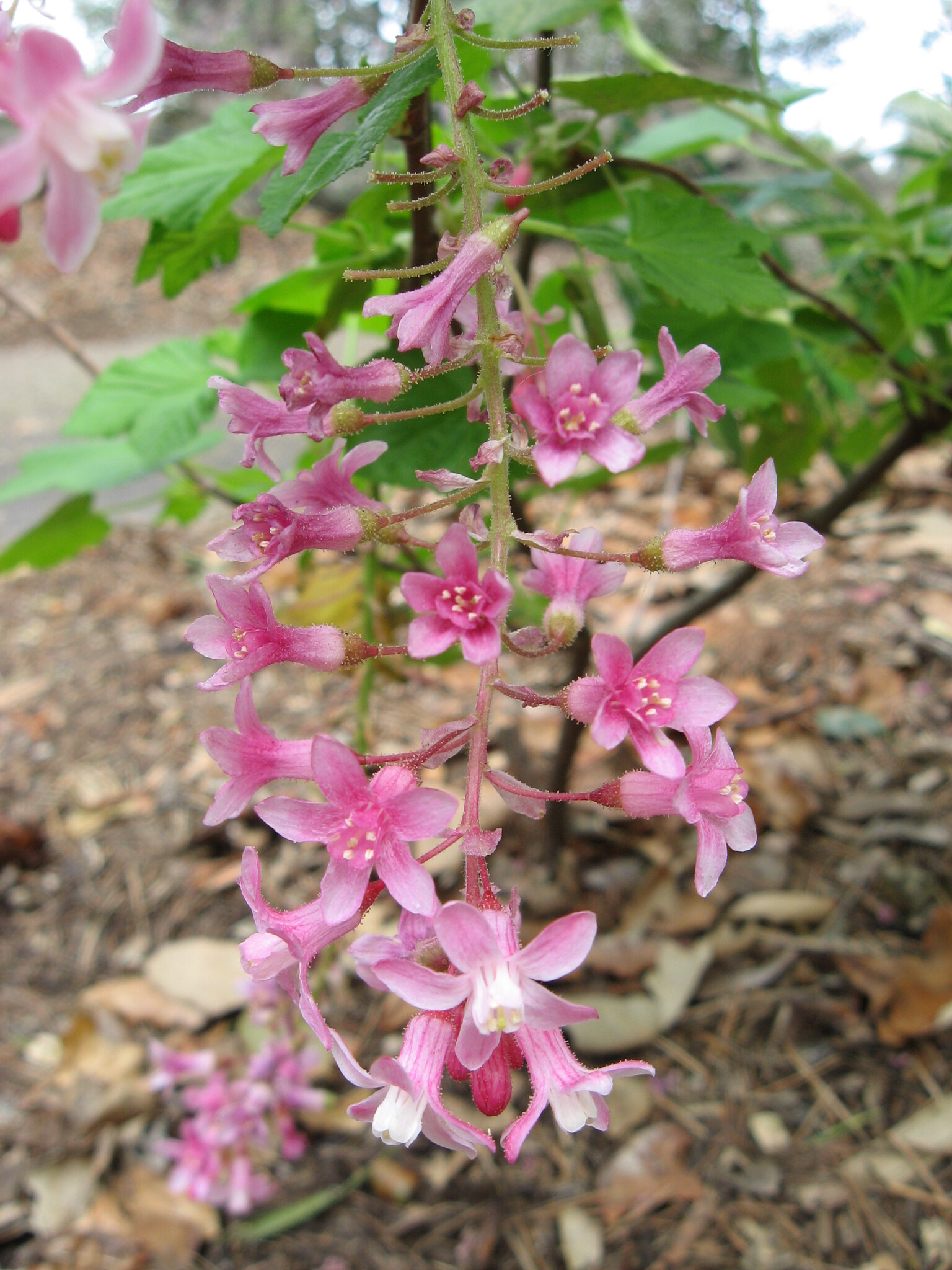
Arabic ribas, meaning acid-tasting, in reference to the acrid fruits of some species
Mostly deciduous shrubs. Shoots sometimes with bristles or thorns. Leaves alternate, simple, generally palmately lobed and toothed; stipules absent. Flowers mostly bisexual, occasionally with sexes on separate plants, solitary or in clusters. Parts mostly in 5s, rarely 4s. Sepals generally petal-like and longer than the petals, which are attached to the throat of the calyx tube and often scale-like. Ovary inferior, with 1 chamber; styles 2. Fruit a berry, with the remains of calyx persistent.
Commercial production of currants and gooseberries is confined to Tas and S Vic and is on a small scale for specialist markets.
About 150 species, mostly cool-temperate northern hemisphere.
Mostly by hardwood or semi-hardwood cuttings.
Source of the edible currants and gooseberries.
Leaves palmately lobed; ovary with 1 chamber; fruit a berry.
Source: (2002). Grossulariaceae. In: . Horticultural Flora of South-eastern Australia. Volume 3. Flowering plants. Dicotyledons. Part 2. The identification of garden and cultivated plants. University of New South Wales Press.
